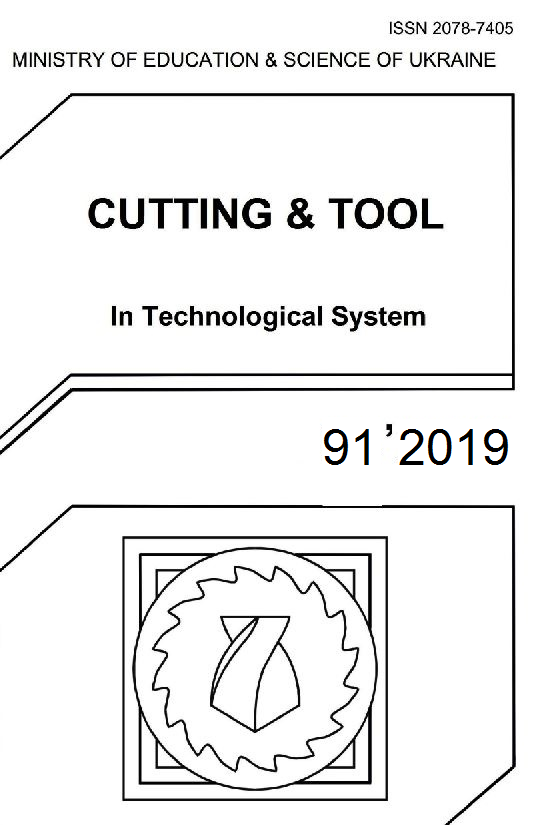CHANGE OF STRESS IN SUPER-SOLID CERAMIC AT VIBRO-ABRASIVE PROCESSING
DOI:
https://doi.org/10.20998/2078-7405.2019.91.21Keywords:
diffractogram, remaining tensions, durability of constructions, bragg angles, oscillation treatment.Abstract
Residual stress arises in a material during its heat treatment, transition from a liquid to a solid state, during mechanical processing, welding, etc. Residual stresses are always present in plastic, metal, and glass. The cause of the residual stresses is the heterogeneity of the deformed state of the solid due to various changes in different places of its length or volume. In some cases, it becomes necessary to reduce or completely relieve residual stresses in the product. For this, various methods can be used with respect to the part having residual stresses. Scientists tried to solve the question of changing the residual stresses in superhard ceramics in different ways. To determine the change in the magnitude of the internal stresses associated with power and thermal effects, ceramic samples were examined without treatment and after processing with different time limits, an X-ray diffraction analysis was performed using a diffractometer DRON-4- 3. Due to the fact that the known methods for removing residual stresses are not effective enough for parts made of superhard ceramics, it is necessary to propose some new method of dealing with these phenomena. One of the methods for relieving internal stresses of superhard ceramics is vibration processing. There are various methods of vibration processing. For each specific case, you can choose a certain type of processing, which will provide the necessary reduction of residual stresses and deformations. The article considers the influence of vibration-abrasive processing on the change in residual stresses in superhard ceramics. The diffractograms of surfaces at various angles of reflection are presented and analyzed before and after vibro-abrasive treatment. The dependence of the value of the residual stresses on the processing time, the calculation of the values of the residual stresses before and after vibration processing are given and evaluated. Experimentally shown is a decrease in residual stresses in superhard ceramics depending on the processing time. The results of resistance tests of the tool are presented and the possibility of increasing resistance by controlling residual stresses in the tool composite is shown.References
Bakunov, V.S. Prochnost i struktura keramiki /
V.S. Bakunov, A.V. Belyakov // Ogneuporyi i tehnicheskaya keramika. – 1998. – № 3. – pp. 11–15.
Kuzin, V.V. Effektivnoe primenenie vyisokoplotnoy keramiki dlya izgotovleniya rejuschih i deformiruyuschih instrumentov / V.V. Kuzin // Novyie ogneuporyi. – 2010. – № 12. – pp. 13‒19.
Grigorev, S.N. Vliyanie silovyih nagruzok na napryajenno-deformirovannoe sostoyanie rejuschih plastin iz oksidnoy keramiki / S.N. Grigorev, V.V. Kuzin, D. Berton [i dr.] // Vestnik mashinostroeniya. – 2012. – № 1. – pp. 67‒71.
Downloads
Published
Issue
Section
License
Copyright Notice
Authors who publish with this Collection agree to the following terms:
1. Authors retain copyright and grant the Collection right of first publication with the work simultaneously licensed under a Creative Commons Attribution License that allows others to share the work with an acknowledgement of the work's authorship and initial publication in this Collection.
2. Authors are able to enter into separate, additional contractual arrangements for the non-exclusive distribution of the Collection's published version of the work (e.g., post it to an institutional repository or publish it in a book), with an acknowledgement of its initial publication in this Collection.
3. Authors are permitted and encouraged to post their work online (e.g., in institutional repositories or on their website) prior to and during the submission process, as it can lead to productive exchanges, as well as earlier and greater citation of published work.

